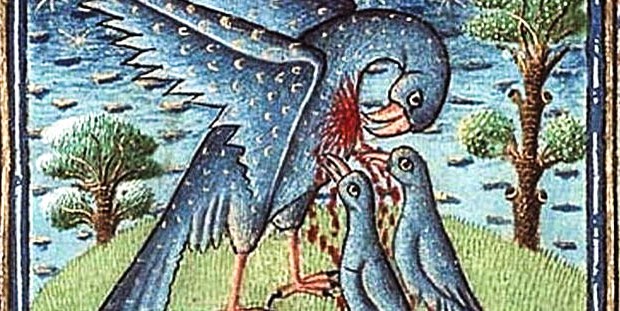In the Catholic Church, the month of July is dedicated to the Precious Blood. It is a wonderful time to be reminded of that gift, recalling all the while that devotion to the Precious Blood marks not only one fleeting summer month but our entire year, offering true and abiding sustenance.
The privilege of receiving the Blood of Christ is even more profound when we remember that Christ is the fulfillment of the Scriptures, and the fulfillment of many ancient covenants associated with blood. The first sacrifice pleasing to God was Abel’s slain lamb. This angered Cain, who spilled Abel’s blood. To the ancient Hebrews, blood was associated with the soul. God says to Cain: “What have you done? The voice of your brother’s blood is crying to me from the ground.” (Gen 4:10) And so, the soul of Cain cries out to God for peace.
Abraham established the covenant of circumcision. The blood of the lamb on the doorposts at Passover spared the Israelites’ children from death. Moses sprinkled the blood of animal sacrifices on the people to bless them as part of rituals commanded by God. In His own time, Jesus would have been very familiar with the sight of sinners coming to the temple with the offering of a lamb, confessing their sin while they placed their hands on the animal’s head, and then slitting its throat as a substitute, to die for them. “I am the Lamb of God,” would have had such a visceral meaning when spoken to a people familiar with that common occurrence. The Shepherd of us all becomes the Lamb of sacrifice. The blood of Jesus delivers the peace for which Abel’s blood cried. We are the blood-purchased children of God. At Gethsemane and Golgotha, the blood of Christ fell to the ground and answered Abel’s cry with a searing beauty beyond imagining.
An ancient medieval tradition spoke of “the Pelican-in-Her-Piety,” as a symbol of Christ, and it is an image prevalent in many a church and cathedral, from stained glass windows to floor mosaics. Legend held that when a mother pelican’s young were languishing or dying, she would impale her own breast to feed them from her blood, which would revivify them even at the expense of her life. It is a stunning symbol of Christ. If you encounter someone who is shocked by such images of consuming or being blessed by blood, tell them, to paraphrase C.S. Lewis, “God is good, but He is not tame.” The new life Jesus gave came “with water and blood.” (1 John 5:6).
St. Longinus, yes, saint, is the soldier who pierced the side of Christ with a lance. He declared that truly Jesus was the son of God, because the blood of Christ spilled on Longinus and healed his eyes. Tradition tells us that Longinus converted, left the army and spread the Gospel until his own martyrdom.
In honor of the Precious Blood, let us receive the Eucharist with ever more gratitude for the Lamb of God. May we find compelling ways, like the storied Pelican, to nourish others, giving without limit. And may we pray to St. Longinus, whose vision was blessed by Calvary’s blood, to spread the Gospel in whatever ways, be they small or great, that we can.
What a faith, what a savior have we, that even a man who wounded the side of God may become a saint. Thus, what is our excuse not to try?
~
Here is a beautiful prayer to the Precious Blood.

